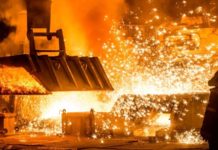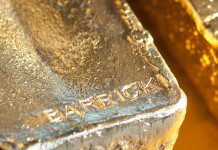
SIBANYE-Stillwater has taken a circumspect approach to merger and acquisition activity following an increase in battery metal prices, said CEO Neal Froneman.
Commenting in the group’s interim results announcement today, Froneman said that “the significant increase in battery metal prices since early 2021 has required a more cautious approach to M&A growth”.
He added that Sibanye-Stillwater was focused on “specific acquisition opportunities” such as the June announcement it would increase its interest in the Keliber lithium project in Finland to 80%, taking its total investment in the venture to €250m (R4.2bn).
In this vein, Froneman said he expected his company to acquire 50% of the Rhyolite Ridge lithium project in the US in terms of a $490m option with its owner ioneer. This would be only once the project had met its conditions precedent including permitting and securing debt finance. The group expects these permits to be in place in about 18 months.
Froneman’s comments echo an interview with Miningmx in June in which he said there was too much “froth” in the market. “You are seeing a global economic reset taking place and the opportunity to make the right moves will probably happen in six to nine months’ time,” he said.
Between February and November 2021, the company allocated $1bn in investment in the lithium projects as well as the Sandouville nickel refinery in France and a base metals tailings reprocessing firm in Australia. The proposed $1bn purchase of base metal mines in Brazil from Appian Capital Advisory was called off which will see the parties face off in a UK court action.
Froneman said in a conference call today the potential legal action with Appian would not inhibit its acquisition strategy; in fact the company was comfortable retaining some R27.2bn ($1.7bn) in cash and equivalents in order to fund opportunistic deal-making.
Production headwinds
Sibanye-Stillwater posted sharply lower earnings for the six months ended June owing to lower production from Stillwater, the US platinum group metal (PGM) mine which was affected by flooding, and a strike at the South African gold mines for three months from March which resulted in 63% less gold year-on-year and R3.1bn loss at the adjusted earnings before interest, tax, depreciation and amortisation level.
The outcome was a 51% decline in interim profit of R12.3bn. Sibanye-Stillwater said the decline ought to be viewed against a record interim profit last year amid sky high PGM prices. At R43,379 4E/oz, the PGM basket price for the six months under review was 19% lower than in the comparable six months.
Sibanye-Stillwater declared an interim dividend of 138 South African cents a share (32.46 USc/share) and representing an annualised dividend yield of 7%.
Froneman said the outlook for the company in the second half of the financial year was much improved following the resumption of gold production in June and at Stillwater following the two days of flooding.
Stillwater is expected to produce 19% less metal this year of between 445,000 to 460,000 ounces compared to 550,000 to 580,000 oz as per previous production guidance. The mine has also been “reset” with its long-term 700,000 oz/year production only likely to be met in the 2027 financial year.
The gold mines are expected to produce between 450,000 to 466,000 oz this year, about half of original guidance with all in sustaining costs increasing to a loss-making $2,880 and $3,060/oz. Froneman said he hoped the strike at the gold mines would provide some “learnings” for unions currently engaged in PGM wage talks at the South African mines.
He reiterated previous comments that Sibanye-Stillwater would only settle inflation-related wage improvements and would not be pressured into paying a premium for agreements over a longer period. Anglo American Platinum and Impala Platinum signed 6.6% and 6.5% annual wage increases over five years in May and June respectively – longer than the usual three-year deal tenure.
Sandouville concern
Sibanye-Stillwater voiced its concern regarding the negative impact of energy price inflation at its Sandouville facility. The operation reported a slim $4m (R60m) in adjusted EBITDA despite record nickel prices during the six month period.
“Recent increases in electricity and gas prices have reduced gross operating margin and will be a risk to costs depending on the direction of future European energy and gas supplies,” Sibanye-Stillwater said.
Froneman said, however he was not concerned about the integrity of the acquisition because it was still early in its strategy aimed at building the asset’s productive capacity. It was also a basis for the group’s European recycling business.
“We didn’t buy it for what it is today. We need to make it profitable which is about increasing volume of about three years. That will ensure it doesn’t require a lot of funding.
“The work that is taking place is to convert it from nickel salts and nickel products to a refinery that produces nickel sulphate. That is under review,” said Froneman.










